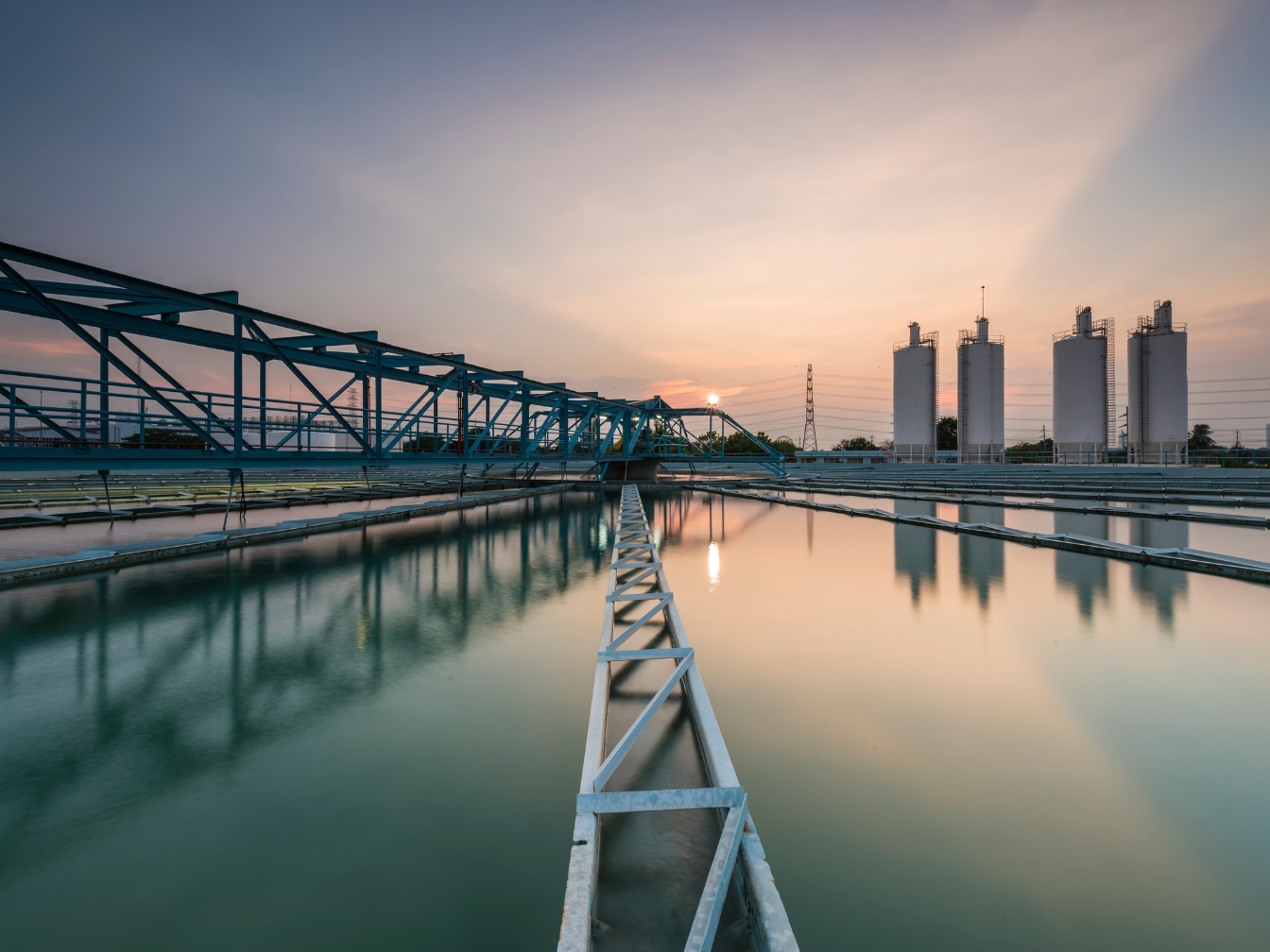Extreme weather events are making water more scarce, more unpredictable and more polluted. These impacts throughout the water cycle threaten sustainable development, biodiversity, and access to water and sanitation.
Flooding and rising sea levels can contaminate land and water resources with saltwater or raw sewage, and cause damage to water and wastewater infrastructure.
The impact of climate change is felt through rising sea levels, worsening floods, extreme bushfires and drought exemplified by:
rising seawater levels threatening wastewater treatment plants and pumping facilities;
floods bringing large amounts of water into catchments and dams causing major variations in feed water quality;
bushfires affecting the quality of feedwater to water treatment facilities as catchments become impacted by runoff water; and
drought conditions causing deterioration to water resources due to changed chemical composition in water supply catchments.
These challenges to the water industry mean that historical information is no longer good enough as regulators, boards of water utilities and communities demand real-time or predictive information on conditions.
The task therefore is knowing what will happen as a result of climate change induced events ahead of time and thus being prepared to plan and manage the associated risks.
Using tools such as jar-testing, that are not real-time, operators have been asked to manage feed water quality parameters they have not seen in the past and risk giving out-of-date advice as the water quality changes.
Furthermore, maintenance planning which normally takes place many weeks in advance and often as part of an annual cycle of maintenance programming, is impacted when extreme events occur during maintenance windows. This frequently results in work disruptions and costly, and often hazardous delays.
Knowing the risks before they occur allows operators to make the right decisions at the right time. Whether it is low flow caused by droughts or changing feed water quality caused by floods or bush fires, it’s critical to be able to translate complex science in a way that makes decision-making efficient and effective.
Envirosuite’s Plant Optimiser is digital twin software that interprets complex process information, forecasts treatment plant performance and provides real-time advice to operators and decision makers to maintain compliance and drive performance improvements.
Plant Optimiser has been designed to work real-time with data collected at drinking water treatment and desalination plants, allowing operators to create scenarios of feed water quality. Optimiser will provide advice on the optimal dosing strategy to achieve water quality despite fluctuations in feed water quality.
Plant Optimiser sends hourly email advice on business as usual and optimised performance to help operators adjust their dosing hour by hour, without the need of doing regular time and resource consuming jar-testing.
Plant Optimiser reacts to unexpected, unusual and rare changes in feed water quality, supporting operators through difficult and frequently unfamiliar situations.
The Water Supplies Department of Hong Kong is building a desalination plant at Tseung Kwan O which will produce potable water with an initial capacity of 135 million litre per day to provide a secure freshwater resource.
Envirosuite’s Plant Optimiser is currently being used to simulate scenarios with different feed water quality such as when equipment is outside of operating guidelines or where water quality or flow conditions could lead to equipment failure. Chemical dosing rates, backwashing intervals for filtration equipment, RO system flow management is optimised to provide the most efficient and risk-free operation. Plant Optimiser is used for operator training by simulating a range of scenarios for operators to manage so that they are comfortable with extreme events.
In addition to providing real-time solutions around extreme climate change induced weather events, Plant Optimiser outputs deliver compliant and efficient operating solutions by optimising chemical and energy costs thus provide tangible operating cost benefits and confidence in risk management outcomes.
About the contributor:
Sabina Todd
APAC Regional General Manager & Vice President
Sabina is a business leader and engineer by training with 20 years of experience across public and private sectors. As Envirosuite’s Regional General Manager & Vice President for APAC and a member of the Executive Leadership Team, Sabina drives the region’s strategy to achieve business growth and to solve complex challenges for our clients – with simplified data intelligence.

